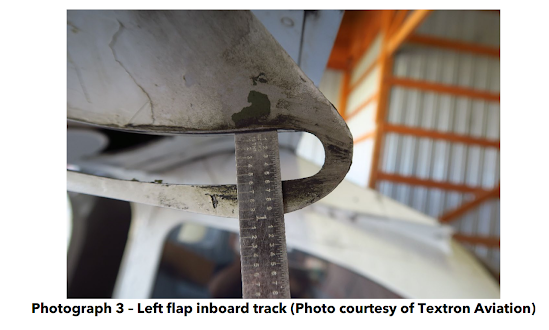Aviation Investigation Final Report - National Transportation Safety Board
The National Transportation Safety Board did not travel to the scene of this accident.
Investigator In Charge (IIC): Brain Rutt
Additional Participating Entities:
Edward Gassman; FAA - Denver FSDO
Peter Basile; Textron Aviation; Wichita, KS
https://data.ntsb.gov/Docket?ProjectID=194713
https://registry.faa.gov/AircraftInquiry/Search/NNumberResult?nNumberTxt=N23788
Scott Aviation Inc
Analysis
On July 6, 2024, at 1426 mountain daylight time, a Cessna R172E airplane, N23788, sustained minor damage when it was involved in an incident near Hillrose, Colorado. The flight instructor and student pilot were not injured. The airplane was operated as a Title 14 Code of Federal Regulations Part 91 instructional flight.
The flight instructor stated that while retracting the flaps after performing a practice stall recovery during the instructional flight, they heard a loud “pop.” The flight instructor took over control of the airplane from the student pilot and noticed that the ailerons were jammed. The flight instructor elected to make an emergency landing on a highway. While maneuvering toward the highway, the flight instructor did not change the flap configuration and had to use rudder control only for directional control. The flight instructor landed the airplane on the highway without incident.
A post incident examination revealed that the left flap inboard track angle brackets were pushed forward and detached from their installed location by the flap support arms. This allowed the flap to contact the aileron, jamming its movement. The failed angle brackets appeared to have been replaced; however, there was no entry of the replacement in the airplane logbooks. Neither the rivets on the left flap inboard angle brackets nor the brackets themselves were painted, indicating that they were not produced by an authorized manufacturer. In combination with the installation of unapproved parts and the condition of the upper left flap roller, which did not rotate smoothly, the flap track slot was likely worn enough to allow the flap support arms to contact the replacement left flap inboard track angle brackets during the retraction of the flaps.
Probable Cause
The binding of the left flap due to improper maintenance.






